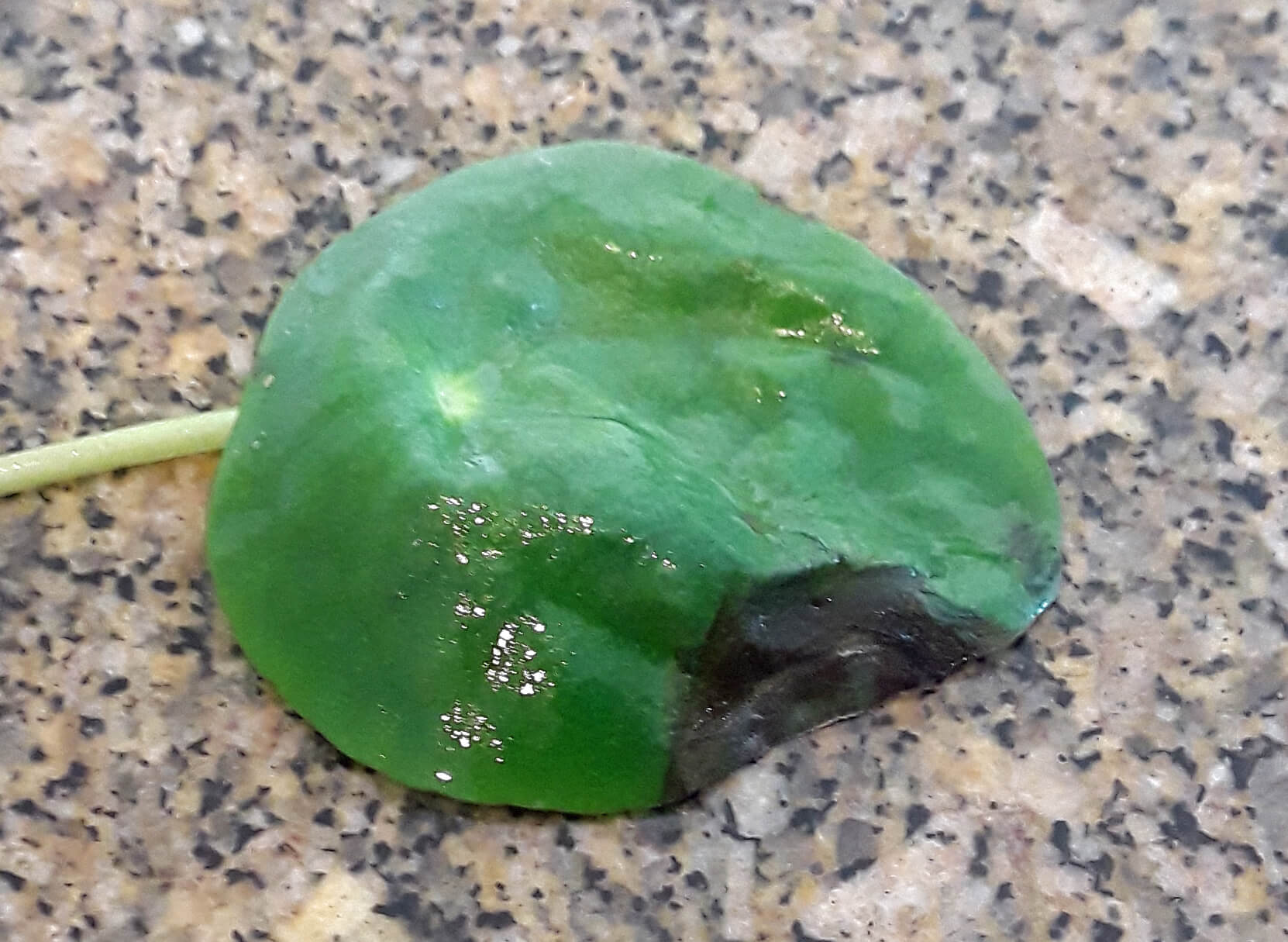
“Why is my Chinese money plant (Pilea peperomioides) getting black spots? It’s almost always the lower leaves.” Question from Katherine of Las Vegas, Nevada
Answer: There are several reasons why the semi-succulent Chinese money plant gets black spots. First, consider what it needs to grow. The South China native naturally grows in shaded forests in well-drained soils among damp rocks at higher altitudes. It likes even moisture, constant moderate temperatures, and humidity. Arid high heat, full sun, or excessive soil moisture are its enemies.
Top Four Leaf Spot Causes in Pilea peperomioides

- Overwatering – When the plants are overwatered gardeners often see lower leaf yellowing and spotting. Remove the sickened leaves, make sure that the pot drains well, make sure the soil drains well but holds moisture, and reduce watering.
- Direct Sunlight – Too much sun can cause this pilea stress. Declining leaves will often show spots.
- Pests and Disease – Whiteflies and other sucking insects can cause black sooty mold as well as leave decline. Have you seen any pests on your plant? Certain fungal diseases can also cause spotting. In this case, lower watering and remove the sickly leaves.
- Nutrient Deficiency – Some nutrient deficiencies, particularly potassium deficiency, can cause leaf yellowing and burning. Be sure to feed plants with a balanced fertilizer for foliage plants monthly.
In your case, I think that overwatering is likely the culprit. Make sure you grow it as an indoor plant in hot, arid Las Vegas. Black Gold® All Purpose Potting Mix is a great potting mix option for this Pilea.
Happy gardening,
Jessie Keith

